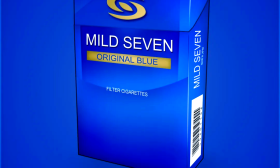Title: Tobacco Use Escalates Need for Antihypertensive Drug Dosage Adjustments
Hypertension, or high blood pressure, remains a leading global health concern, contributing significantly to morbidity and mortality from cardiovascular diseases, stroke, and renal failure. The management of hypertension is a complex process, often requiring a tailored approach involving lifestyle modifications and pharmacological intervention. A critical, yet frequently underestimated, factor complicating this therapeutic landscape is tobacco use. This article delves into the intricate relationship between tobacco consumption and hypertension, specifically exploring how it necessitates increased dosage adjustments and more aggressive management strategies for antihypertensive medications.
The Pharmacological Interplay: Nicotine and the Cardiovascular System
To understand why tobacco use disrupts hypertension control, one must first examine the direct physiological effects of its primary active compound: nicotine. Upon inhalation, nicotine is rapidly absorbed into the bloodstream, triggering a cascade of events that directly oppose the goals of antihypertensive therapy.
Sympathetic Nervous System Activation: Nicotine acts as a potent stimulant, promoting the release of catecholamines such as epinephrine and norepinephrine. These hormones increase heart rate, enhance cardiac contractility, and cause widespread vasoconstriction (narrowing of blood vessels). This combination directly elevates both systolic and diastolic blood pressure, effectively counteracting the mechanisms of most antihypertensive drugs.
Endothelial Dysfunction: The endothelium is the thin lining of blood vessels, crucial for vascular health. It produces nitric oxide (NO), a molecule that promotes vasodilation and maintains vascular tone. Tobacco smoke, laden with thousands of chemicals, damages the endothelium, impairing its ability to produce NO. This results in increased peripheral vascular resistance, a primary driver of hypertension.
Oxidative Stress and Inflammation: Tobacco smoke is a significant source of free radicals, leading to oxidative stress. It also induces a chronic state of inflammation within the vascular system. Both processes contribute to arterial stiffness and atherosclerosis, further exacerbating hypertension and making it more resistant to treatment.
Consequences for Antihypertensive Treatment Regimens
The constant hemodynamic assault from tobacco use creates a moving target for clinicians. The goal of antihypertensive therapy is to achieve and maintain a target blood pressure, but smoking introduces extreme variability. A patient's blood pressure can spike significantly during and after smoking a cigarette, only to drop later. This instability makes it difficult to get an accurate reading of their "true" baseline blood pressure, often leading to misinterpretation of the therapy's effectiveness.

Consequently, healthcare providers are forced into a cycle of dosage adjustments:
- Inadequate Control at Standard Doses: For a patient who continues to smoke, the standard initial doses of antihypertensive medications often prove insufficient. The hypertensive effect of nicotine can overpower the drug's therapeutic effect.
- Requirement for Higher Doses: To overcome this resistance, physicians must frequently prescribe higher doses of a single drug. This increases the risk of dose-dependent side effects. For instance, higher doses of diuretics may lead to electrolyte imbalances, while increased doses of beta-blockers or calcium channel blockers can cause excessive bradycardia (slow heart rate) or dizziness.
- Need for Combination Therapy: It is exceedingly common for smokers with hypertension to require multiple antihypertensive agents from different drug classes to achieve control. A regimen might include an ACE inhibitor to combat vasoconstriction, a calcium channel blocker to relax arterial muscles, and a diuretic to reduce blood volume—a complexity often avoided in non-smoking patients.
- Altered Drug Metabolism: Some components of tobacco smoke are known to induce hepatic enzyme systems, particularly the cytochrome P450 1A2 pathway. This can increase the metabolism and clearance of certain antihypertensive drugs (like some beta-blockers), reducing their bioavailability and effectiveness, thus necessitating a higher dosage.
The Clinical Imperative: Smoking Cessation as First-Line Therapy
The most critical takeaway for both clinicians and patients is that smoking cessation is not merely a complementary lifestyle advice; it is a fundamental component of antihypertensive treatment. The benefits of quitting are rapid and substantial.
- Blood Pressure Reduction: Studies have shown that cessation leads to a noticeable drop in blood pressure, often within weeks.
- Reduced Cardiovascular Risk: Quitting smoking drastically reduces the overall risk of heart attack, stroke, and peripheral artery disease, synergizing with the benefits of blood pressure control.
- Simplified Pharmacotherapy: Patients who successfully quit often find their hypertension becomes far more manageable. In many cases, clinicians can subsequently de-escalate therapy—reducing dosages or even eliminating one agent from a combination regimen—thereby minimizing side effects and improving quality of life.
Conclusion
Tobacco use and hypertension form a dangerous synergy that actively undermines pharmacological management. The pathophysiological effects of nicotine and tobacco smoke create a state of heightened cardiovascular activity that directly antagonizes antihypertensive drugs. This forces clinicians into a pattern of continual dosage adjustments, escalating therapeutic regimens to higher doses and more complex combinations to achieve treatment targets. This approach, while necessary, carries an increased risk of side effects and does not address the root cause. Therefore, the most effective strategy for managing hypertension in tobacco users is a dual-focused approach: aggressively titrating medication to control immediate risk while simultaneously providing robust, supported interventions for smoking cessation. Ultimately, quitting tobacco is the most powerful dosage adjustment a patient can make.










